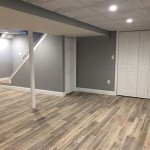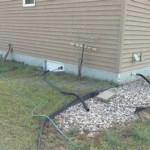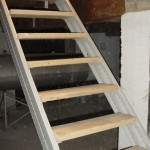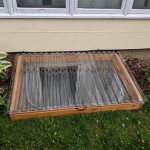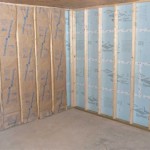What Is a Good Humidity Level for a Basement Apartment?
Maintaining a comfortable and healthy environment in a basement apartment requires careful attention to humidity levels. Unlike living spaces above ground, basements are often susceptible to moisture problems due to their proximity to the ground and potential for leaks. Excessive humidity can lead to various issues, including mold growth, musty odors, and damage to belongings. This article aims to shed light on the optimal humidity range for basement apartments and discuss the implications of high and low humidity.
Understanding Humidity Levels
Humidity refers to the amount of moisture in the air. It is measured as a percentage, representing the ratio of water vapor present in the air compared to the maximum amount it can hold at a given temperature. Humidity levels are categorized into three main ranges:
- Low humidity: Below 30%. This range is generally considered dry and can lead to static electricity, dry skin, and respiratory discomfort.
- Moderate humidity: Between 30% and 50%. This range is typically considered comfortable for most people and promotes indoor air quality.
- High humidity: Above 50%. This range can create a damp, uncomfortable environment and contribute to mold growth, mildew, and other moisture-related problems.
Optimal Humidity Range for Basement Apartments
The ideal humidity level for a basement apartment is generally considered to be
between 30% and 50%
. Maintaining humidity within this range helps to create a comfortable and healthy living environment, while minimizing the risk of moisture-related issues.Implications Of High Humidity in Basement Apartments
High humidity levels in a basement apartment can lead to various problems, including:
- Mold Growth: Mold thrives in damp environments, and excessive humidity provides the perfect breeding ground. Mold spores can trigger allergies, asthma, and other respiratory problems.
- Mildew: Similar to mold, mildew grows in humid conditions and can damage surfaces, materials, and belongings.
- Wood Rot: High humidity can cause wooden structures to rot and deteriorate, leading to structural damage.
- Musty Odors: Dampness can produce unpleasant musty odors that permeate the air and make the basement apartment feel stale and unwelcoming.
- Insect Infestations: Some insects thrive in humid environments, such as silverfish and cockroaches, which can become a nuisance and pose health risks.
Implications Of Low Humidity in Basement Apartments
While high humidity poses significant risks, low humidity in a basement apartment can also lead to problems, including:
- Static Electricity: Dry air can increase static electricity, which can be uncomfortable and damage electronic devices.
- Dry Skin and Respiratory Discomfort: Low humidity can dehydrate the skin and respiratory system, contributing to dryness, irritation, and respiratory issues.
- Dust Mites: While not directly caused by low humidity, dry air can increase dust mite populations, triggering allergies and asthma.
Managing Humidity Levels in Basement Apartments
Several strategies can be employed to manage humidity levels in a basement apartment, including:
- Proper Ventilation: Ensure adequate ventilation by opening windows and doors for fresh air circulation, particularly during dry periods. Utilize exhaust fans in bathrooms and kitchens to expel moisture-laden air.
- Dehumidifier: A dehumidifier removes excess moisture from the air, effectively reducing humidity levels. Choose a dehumidifier appropriate for the size of the basement apartment.
- Sealing Leaks: Identify and seal any leaks, such as cracks in the foundation or around windows and doors, to prevent moisture infiltration.
- Regular Maintenance: Regularly inspect and clean gutters, downspouts, and sump pumps to ensure proper drainage and prevent water buildup.
- Controlling Indoor Moisture Sources: Avoid excessive use of humidifiers, ensure laundry is dried outside or in well-ventilated areas, and promptly address any water spills or leaks.
It is crucial to note that humidity management is an ongoing process. Regular monitoring and adjustments are necessary to maintain optimal levels and prevent moisture-related problems in a basement apartment.

Dehumidifier Setting Chart What Should Be Set At

How To Achieve An Ideal Basement Humidity Of 30 50

A Guide To Controlling Nc Home Humidity Newcomb And Company

How To Achieve An Ideal Basement Humidity Of 30 50

Relative Humidity Chart For Ideal In The House

What Is The Ideal Basement Humidity Level Epp Foundation Repair

Hot In Here How To Maintain Ideal Indoor Humidity Summer

Ideal Basement Humidity And How To Achieve It Epp Foundation Repair

What Is The Ideal Indoor Humidity Level For Your House Iaq Works

Bad Advice About Indoor Humidity In Cold Weather Energy Vanguard
Related Posts
